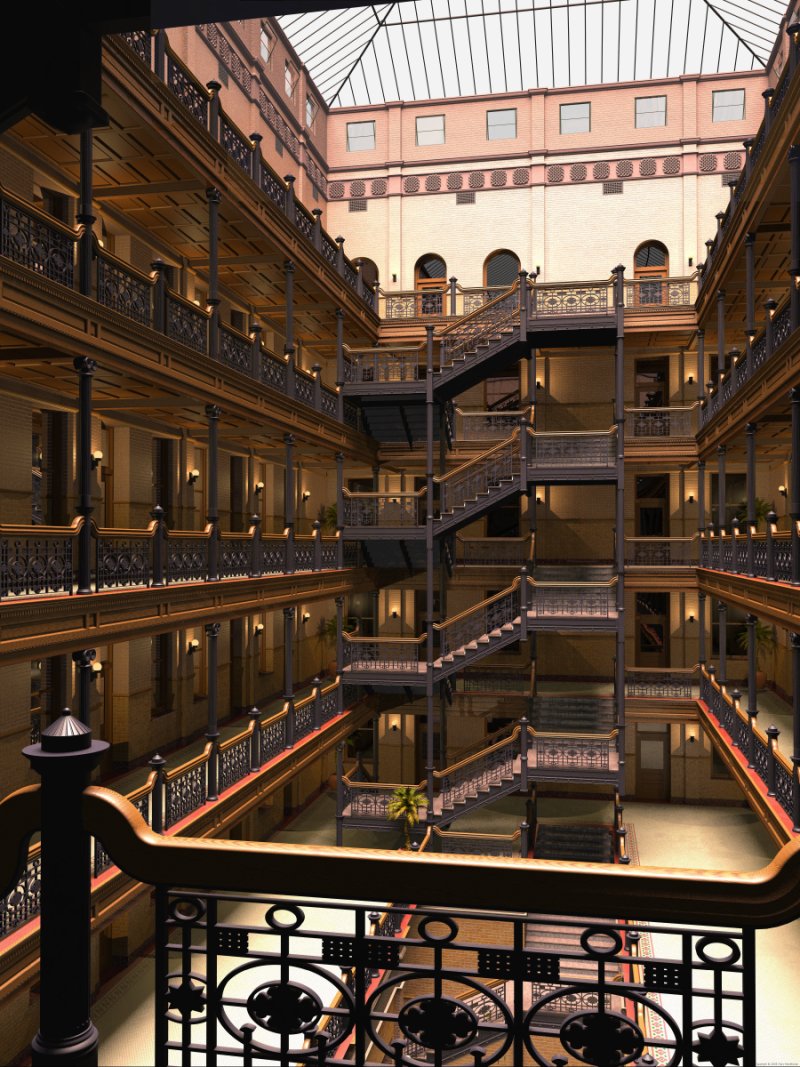I have been fascinated by the Bradbury building ever since I saw it in the
movie Blade Runner and heard that it was a real building in downtown Los Angeles. It is breathtaking to visit and I wanted to recreate it's dramatic atrium in Povray.
High resolution photographs of the Bradbury building can be found on the Internet.
I used these for the basic structure and guessed at the fundamental dimensions.
Not being constrained by a client who must pay for the building, I have added
one floor to the design of Wyman. I believe the extra floor is visually
more pleasing and creates a more dramatic atrium. I did not accurately
reproduce the decorative iron work or the freize because of their complexity
but I created my own patterns which were simpler to model mathematically. I
also left off the iron elevators which run up through the center of the
atrium partly because I ran out of time and partly because they would tend to clutter up the three
dimensional space.
The three dimensional model is quite complete and was built without
anticipating camera locations. I have several viewpoints of the atrium
other than the main image which I will try to add to the submittal package.
(Some of these were created before I added the extra floor.)
The main image uses hall lighting. These lights minimize the benefit of
radiosity and because of the slow rendering speed with the lights I turned
this feature off. For other views I had the lights off and used radiosity to
illuminate the hallways. This can be seen in one of the supplemental views.
Much time was spent on details that are lost by the scale of the final image.
I hope that some of this detail is captured by the accompanying detail images.
The brick walls were created using commercial texture maps and bump maps.
The hue of the maps were modified in Paint Shop Pro to better match the real
colors in the Bradbury interior.
The pattern on the freize is a Celtic knot created using the Knots3D program
by Steven Abbott and exported to pov format.
The window glass is an isosurface modified with 3D noise to create realistic
warp in the glass.
The palm tree was created using POV-Tree by Gena Obukhov.
The image was rendered on a home made computer with dual Athlon 2600 CPUs.
Memory is 2GB which is required to avoid swapping. The final render for
the main image took approximately 10 days.




